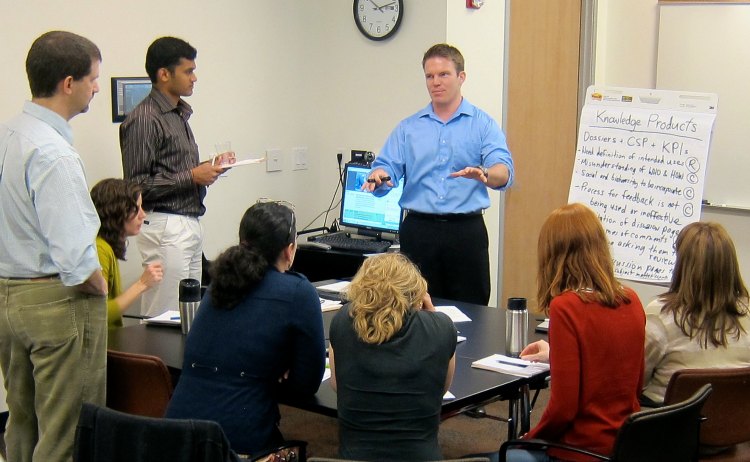A meeting pro needs tools, and a flip chart is easily the most useful. Flip charts have three attributes that makes them the best option for capturing critical meeting information. Let me tell you about them.
3 reasons flip charts rule
- They are portable. I can put them anywhere in the room and move them around as needed. This is particularly helpful if I want to rearrange attendees into small groups. When each small group needs a flip chart of its own, I can provide one.
- Meeting progress stays visible. As each page is filled, it can be ripped from the pad and posted for the remainder of the meeting. Later when people need to refer back to an earlier idea or decision, it’s easily accessible. Posting the pages also helps participants stay oriented to where they are in the meeting plan. Finally, seeing the sheets reinforces the idea that something is happening in the meeting. There are, after all, lots of full flip chart pages hanging on the wall. They represent the group’s accomplishments.
- Easy to transcribe. At the end of the meeting, the pages can be pulled off the wall in the order they were created, stacked, folded and carried back to your desk. I typically toss the pile on the floor, and working one sheet at a time, quickly produce meeting notes from these pages.
Flip chart best practices
You wouldn’t think using a flip chart is complicated; however, you’ll find these best practices will help you use one like a pro.
- Use water-color markers so they don’t bleed through.
- Write in capital letters if possible.
- Don’t cram too much on the page. Write large enough so people furthest away can still see.
- Use dark colors for words.
- Use bright colors for underlining and highlighting.
- Write what people say.
- Ask person to shorten long phrases for you.
- Confirm that what you are writing is correct.
- Use abbreviations whenever possible.
- Get second scribe if one can’t keep up.
- Stand to the side of the flip chart so people can see.
- Speed is important during brainstorming.
- Pre-rip tape so it’s ready when needed. Stick the pieces on the leg of flip chart stand.
- Date and number pages for later translation.
- Keep work visible by posting on the walls.
Challenges
The biggest challenge I’ve found is having a decent flip chart stand available. I want it to be large with a solid back. It should not wobble and be light enough to move around from place to place.
If a decent stand isn’t available, but I have a pad, I will use the wall as my flip chart. This works best when you have sticky-back paper. You can make just one small section of wall your “flip chart” and then move the filled pages to other spots for the duration of the meeting. If you use this method, confirm that the markers you are using won’t bleed through onto the wall.
The second challenge is having pads with enough paper on them. Usually, if there’s a pad in a conference room, you’ll find each page has already been used. This is a great testament to how useful they are. You might want to keep your own stash and bring a pad along with you so you know you’ll have what you need.
If you’ve been leading meetings without a flip chart, it’s time to give it a try. I’m confident you and the other meeting participants will see value in them.


